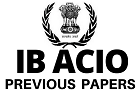sponsored links
Nanotechnology - A New Revolution
Overview
- What is nanotechnology ?
- Use of nanoscale materials.
- Application and scope of nanotechnology.
- In electronic and information technology.
- In sustainable energy.
- In environmental radiation.
- In medical and health field.
- In future transportation.
- Creating more powerful weapons.
- Necessary regulations for application of nanotechnology to control risks.
Nano-materials include engineered nano-objects, such as nanoparticles, nanotubes, and nanoplates, and naturally occurring nanoparticles, such as volcanic ash, sea spray, and smoke. Nanoparticles are bits of a material in which all three dimensions of the object are within the nanoscale. Nanotubes have a diameter in the nanoscale, but can be several hundred nanometres long or even longer. Nanoplates have a thickness at the nanoscale, but their other two dimensions can be quite large.
Nanoscale materials have been used for over a millennium. Nanoscale gold was used in stained glass in medieval Europe and nanotubes were found in blades of swords made in Damascus. The era of modern nanotechnology began with the invention of Scanning Tunnelling Microscope that could 'see' individual atoms.
Applications and Scope of Nanotechnology
Most benefits of nanotechnology depend on the fact that it is possible to tailor the essential structures of materials at the nanoscale to achieve specific properties. Using nanotechnology, materials can effectively be made to be stronger, lighter, more durable, more reactive, more sieve-like, or better electrical conductors, among many other traits.Electronic and Information Technology Applications
- Nanotechnology is already in use in many computing, communications, and other electronics applications to provide faster, smaller, and more portable systems that can manage and store larger and larger amounts of information. Magnetic Random Access Memory (MRAM) enabled by nanometer-scale magnetic tunnel junctions that can quickly and effectively save even encrypted data during a system shut down or crash, enable resume-play features and gather vehicle accident data.
- Displays for many new TVs, laptop computers, cell phones, digital cameras, and other devices incorporate nanostructured polymer films known as organic light-emitting diodes or OLEDs.
- Other computing and electronic products include flash memory chips for iPod nanos, ultra responsive hearing aids.
Sustainable Energy Applications
- Prototype solar panels incorporating nanotechnology are more efficient than standard designs in converting sunlight to electricity, promising inexpensive solar power in the future. Nanostructured solar cells already are cheaper to manufacture and easier to install, since they can use print-like manufacturing processes and can be made in flexible rolls rather than discrete panels.
- Nanobioengineering of enzymes is aiming to enable conversion of cellulose into ethanol for fuel, from wood chips, corn stalks (not just the kernels, as today), unfertilised perennial grasses, etc.
- Nanostructured materials are being pursued to greatly improve hydrogen membrane and storage materials and the catalysts needed to realise fuel cells for alternative transportation technologies at reduced cost. Researchers are also working to develop a safe, lightweight hydrogen fuel tank.
Environmental Radiation Applications
- Besides lighter cars and machinery that requires less fuel, and alternative fuel and energy sources, there are many eco-friendly applications for nanotechnology, such as materials that provide clean water from polluted water sources in both large-scale and portable applications, and ones that detect and clean up environmental contaminants.
- Many airplane cabins and other types of air filters are nanotechnology-based filters that allow 'mechanical filtration,' in which the fiber material creates nanoscale pores that trap particles larger than the size of the pores.
- New nanotechnology-enabled sensors and solutions may one day be able to detect, identify, and filter out, and/or neutralise harmful chemical or biological agents in the air and soil with much higher sensitivity than is possible today.
Nanobiosystems, Medical and Health Applications
- Nanotechnology has the real potential to revolutionise a wide array of medical and biotechnology tools and procedures so that they are more W personalised, portable, cheaper, safer, and easier to administer.
- Quantum dots are semiconducting nanocrystals that can enhance biological imaging for medical diagnostics.
- Gold nanoparticles can be used to detect early-stage Alzheimer's disease.
- Research enablers such as microfluidic chip-based nanolabs capable of monitoring and manipulating individual cells and nanoscale probes to track the movements of cells and individual molecules as they move about in their environments.
- Research is underway to use nanotechnology to spur the growth of nerve cells, e.g. in damaged spinal cord or brain cells.
Future Transport Applications
- In addition to contributing to building and maintaining lighter, smarter, more efficient, and 'greener' vehicles, aircraft, and ships, nanotechnology offers various means to improve the transportation infrastructure.
- Nano-engineering of steel, concrete, asphalt, and other cementitious materials, and their recycled forms offers great promise in terms of improving the performance, resiliency, and longevity of highway and transportation infrastructure components while reducing their cost.
Though the field of Nanotechnology sounds promising, there are controversial issues that must be considered and resolved. It is imperative that national and international regulatory bodies cooperate closely not only with each other, but also with academia and industry, in developing harmonised terminology and standards, a framework for health and environmental risk assessment and, based on that, the necessary regulations and guidelines so that nanomaterials and nanotechnology can be developed responsibly. This will be helpful in optimising the benefits of nanotechnology while minimising and controlling the risks.
Difficult Words with Meanings :
- Nanometre one billionth of a meter
- Nanotube a cylindrical nanoparticle, especially a carbon molecule
- Damasus capital of Syria, reputed to be oldest continuosly existing city in the world
- Polymer a compound of high molecular weight derived by the addition of many smaller molecules
- OLED Organic Light Emiting Diode (LED) composed of one or more layers of organic material
- Protolyre the original or model on which something is based
- Quantum fundamental unit of quantised physical magnitude
- Microfluidic a multidisciplinary field with practical applications of the design of systems.
shared by Nisheeta Mirchandani
sponsored links










 English Vocabulary from
English Vocabulary from










0 Responses:
Post a Comment